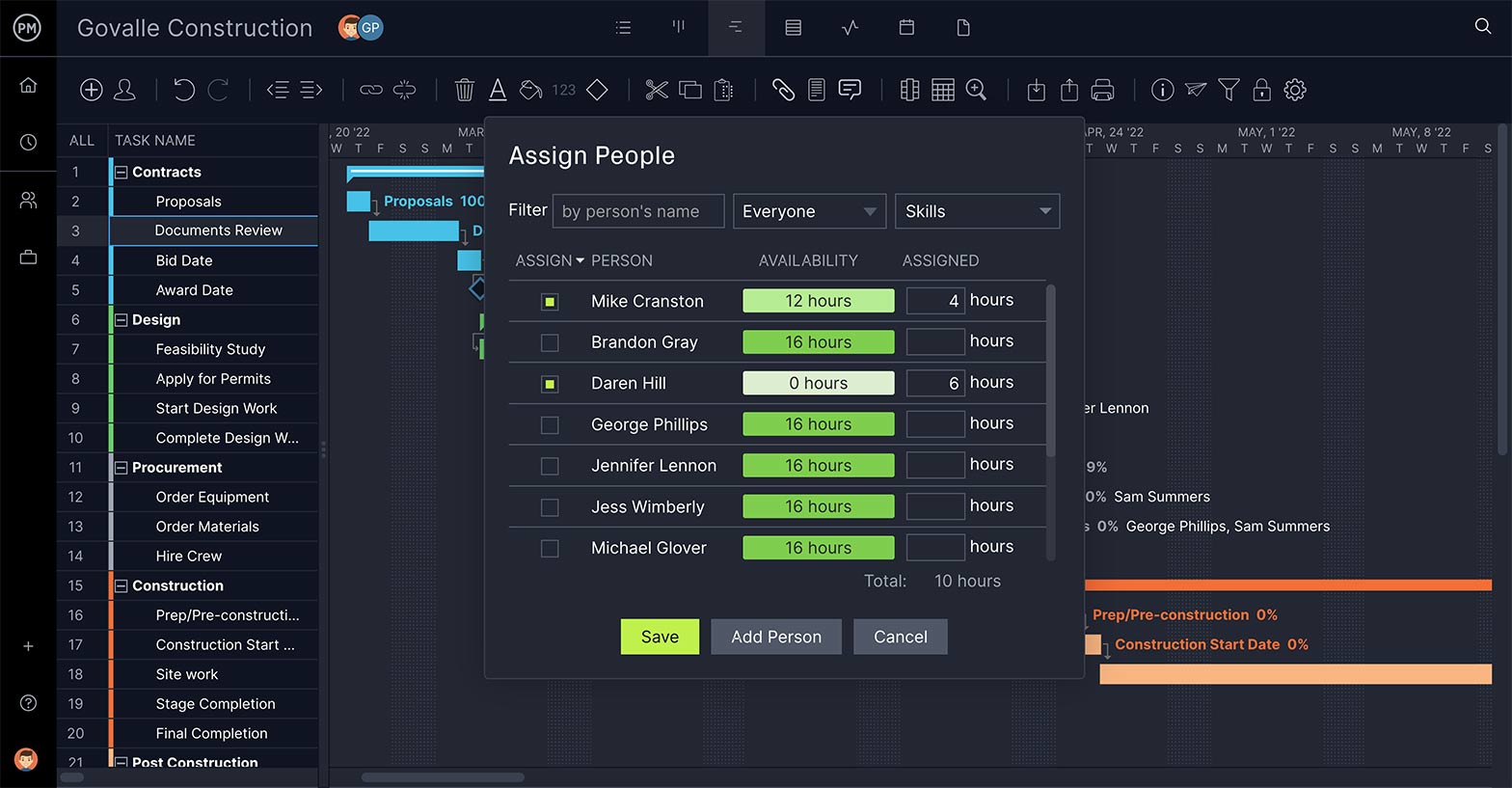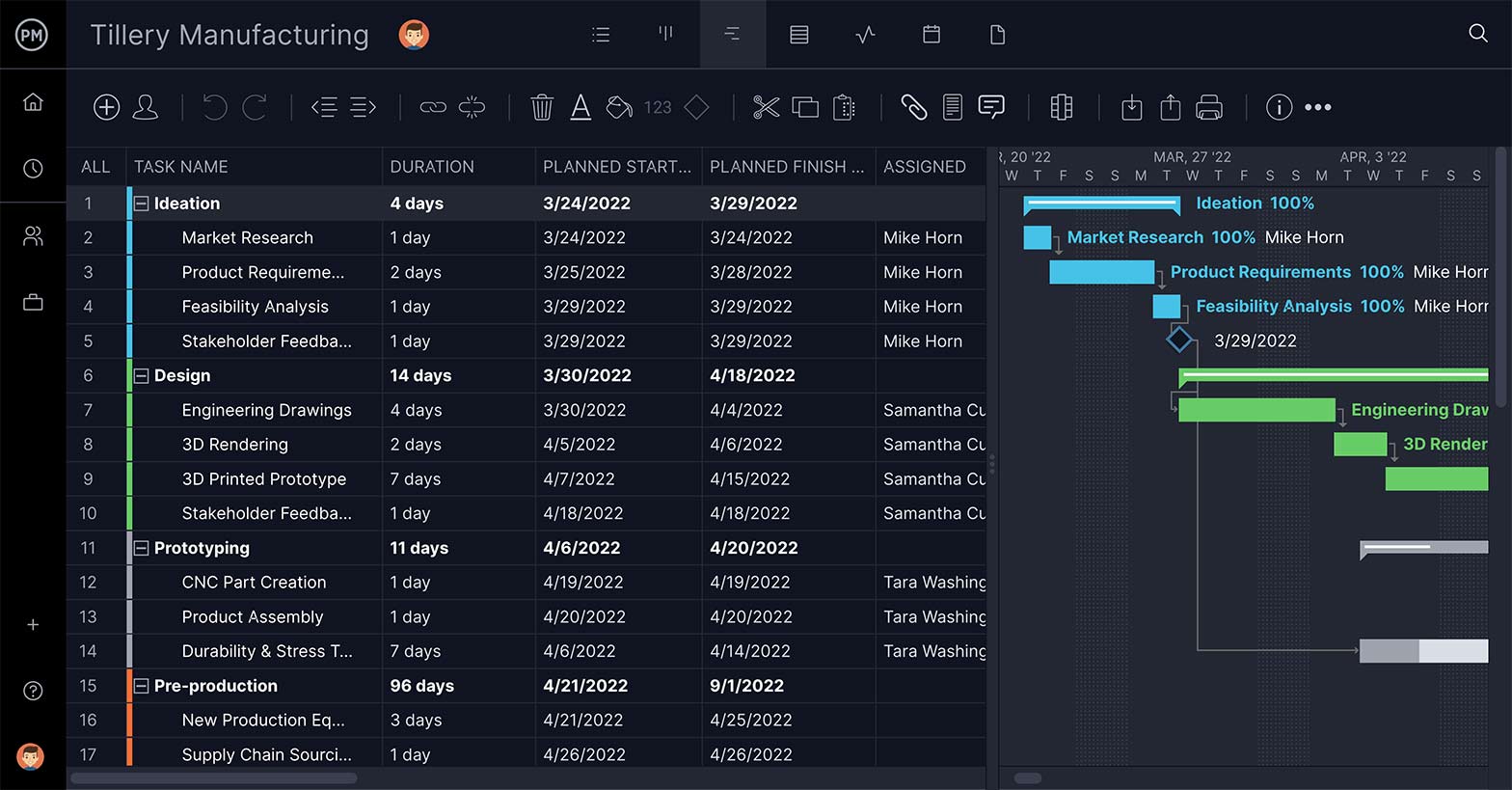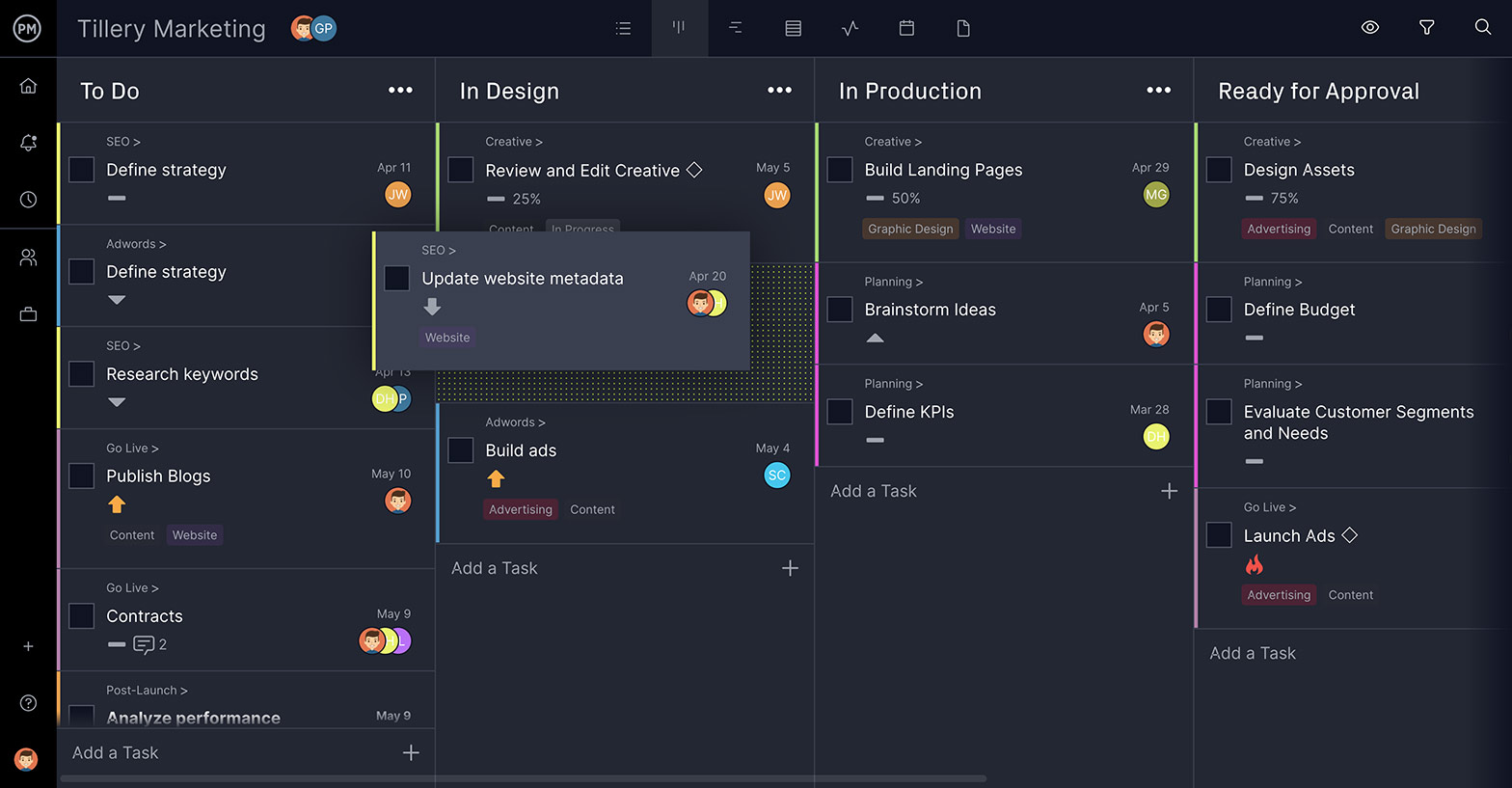Working remotely is more than common, it’s becoming a necessity for any number of reasons. There are advantages to securing the best talent wherever they might live. It helps an organization’s bottom line. Sometimes, an act of God will disrupt the normal flow of work.
Whatever the reason, virtual project management comes with its own set of challenges that are added to the already difficult task of managing a project. There are traditional protocols for making assignments, managing resources, tracking progress and updating stakeholders, but not when they’re in a different locale or a foreign country.
How do you navigate this brave new world of virtual project management? We’ll get to that, but first, it’s important to understand the big picture.
What Is Virtual Project Management?
Virtual project management is the process by which one manages projects via remote or virtual teams. When teams are distributed across different time zones, they still need to get assigned tasks and that work must be monitored and tracked to make sure it stays on schedule. As more teams work from home, virtual project management has become more defined.
While the basics remain the same, such as the life cycle of the project and the various disciplines that go into controlling every aspect of a project, there is a difference. And it’s a big one. Those teams being managed are not in one place, but rather scattered over across the four corners of the world. Not having physical contact with one’s team creates new obstacles that project managers must overcome.
Virtual teams are not going away. They are growing, and project managers must not become complacent and believe that the old rules still apply. Things are changing and project managers must change with them and take their project management into the digital age.
Thankfully, project management tools have for some time been moving from analog to digital, and with that transition increasing efficiencies and productivity. So, the move to virtual project management is the great leap it might at first appear. But first, let’s look into the trend and why it cannot be ignored.
Why the Rise in Virtual Project Management?
There are many reasons why virtual project management is gaining in popularity. There is the fact that many teams are demanding greater flexibility at work so that they have more control over their schedule. This might be due to having young children and wanting to stay home with them or finding a balance between work and home life.
The trend of hiring contractors to outsource work has had some unexpected consequences. As organizations get more accustomed and comfortable working with teams who are not situated with them, they’ve also warmed to the idea of virtual teams and virtual project managers.
New Technology and a New Generation
This goes hand-in-glove with technological advances that have made it easier to manage remote workers. The development of a virtual office has made the transition to viral project management that much smoother.
The generational change of workers is also at play in the rise of virtual project management. New workers are entering the workforce, but older workers who are able to adapt are staying in with the help of virtual teams.
This creates an even more productive team, one that is energized by youthful enthusiasm and new ideas but anchored by the experience and skills of older team members. Also, many younger workers are attracted to working in virtual teams. They are often more familiar with digital tools and appreciate the freedom. Fortunately, none of this compromises the central tenants of good project management.
It’s About Results
ROWE, or results-only work environment, is a management strategy that’s been gaining traction. Its concept of allowing workers to set the terms and time as long as they meet the required results. This has helped fuel the growth of virtual teams, and in so doing, virtual project management.
In fact, for ROWE to work, both managers and their teams must facilitate clear and effective communications, which is a cornerstone of virtual project management.
Related: Communication Management Techniques Every PM Should Know
What Are the Benefits of Virtual Project Management?
The advantages of virtual project management are tied to the benefits of having virtual teams. Virtual project management, after all, exists only as a method to manage those remote teams.
Good for Your Bottom Line
The one that is likely most persuasive to a business is the impact on its bottom line. Having virtual teams and virtual project management to manage them means less office space, less equipment, fewer utility bills, etc.
Access More Talent
As noted earlier, virtual project management means virtual teams, which are a great lure to attract talent beyond your region. This is how many organizations frame the importance of having virtual project management, but what is not always addressed is how remote teams also help with the retention of that talent.
Higher Employee Retention
When managing virtually, your organization is not only attracting talent from beyond its geographic reach but retaining those skilled workers. More employees are demanding a balance of life and work. Being part of a virtual team usually provides them with the flexibility to care for young children, set their hours and get other perks that keep them loyal to the organization. They’re less likely to get restless and seek employment elsewhere.
Greater Productivity
While it might seem counterintuitive, virtual project management boosts productivity. According to a survey from Global Workplace Analytics, “a typical employer can save an average of $11,000 per half-time telecommuter per year. The primary savings are the result of increased productivity, lower real estate costs, reduced absenteeism and turnover, and better disaster preparedness.” That’s not even including less travel time and unnecessary meetings.
Challenges of Virtual Project Management
That doesn’t mean virtual project management isn’t without its challenges. There are always going to be hurdles to clear.
Building Trust
The number-one issue is trust. This is true with any project. Teams must be trusted to execute their tasks as best they can with the skills that got them hired.
Not having your team in the office with you creates a fear that they’re not going to work as diligently as they would if you were looking over their shoulder. The truth is that building trust takes time and that might be a long time if you’re working in a corporate culture that’s new to virtual project management.
Monitoring Progress
Being able to monitor and track progress sort of piggybacks on the trust issue. But even if you have complete faith in your team to work hard, any project manager worth their spreadsheet knows that without metrics to measure their work things can get out of hand quickly.
Having virtual teams to manage makes monitoring and tracking progress more difficult. You can’t just walk into their office and get an update or see where they are in the process.
Office Culture
The corporate culture at your organization can be a benefit or a challenge, but more likely than not it’s another hurdle to clear. Even with a list as long as your arm notes how virtual project management can help projects and organizations, old habits die hard. If executives do not buy into the idea of virtual project management, then it’s bound to fail. But getting that genuine acceptance from the top can be difficult.
Slow Communication
Time is one of the triple constraints in a project. Streamlining process is how projects work more efficiently. But when working with virtual project management and distributed teams, there can often be a delay between the assignment of a task and its execution.
There’s also the day-to-day communication that is so important for any project. Having a channel for communications is crucial, something more immediate than email, and making sure people are paying attention to it.
Tools for Virtual Project Management
Overcoming these challenges and taking advantage of the benefits is where virtual project management tools come in. More people are working remotely and more managers are having to control that work virtually. These are some of the tools that help managers and teams alike to do their jobs better.
G Suite
G Suite from Google Cloud is all your office software under one roof. Not only does it include Gmail, Docs, Drive, Calendar and more for businesses, but it’s all stored online and easy to share with teams. Meetings can be set up, and Calendar alerts the team. Team members can collaborate on documents in real-time. This is the paper virtual trail that leads to solid virtual project management.
Zoom
Zoom is a video conferencing software that has stepped up as the virtual leader in online communications for virtual project management. It’s great for briefings, meetings and one-on-one discussions. The service has recently added passwords to plug security holes it had in the past.
Project Management Software
Productivity tools and video conferencing are but two of the pillars that hold up virtual project management. But it cannot stand without project management software.
What project management software does is enable virtual teams to work better together and managers to assign, monitor and track progress. It does this with a suite of features. To better illustrate how it does this, let’s look at the award-winning ProjectManager.
How to Do Virtual Project Management with Software
First of all, ProjectManager is a cloud-based project management software. That means that data is collected in real-time and anyone with an internet connection is able to log onto the software and work with the team. If you’re managing projects virtually, you’ll want a cloud-based tool that gives you live data and communications.
Virtual Team Management
To manage teams, you first have to get them working. ProjectManager makes starting a project simple. You can upload a spreadsheet of tasks, export a project from another software and then import it into ProjectManager or use one of the built-in templates to walk you through the process.
Assigning might seem a problem when teams are distributed, but once you have a new project, just invite the team to the software and start assigning them tasks. The team will be collected in a pulldown menu—assign one or more to each task.

Make Schedules & Stick To Them
There are multiple project views, and the online Gantt chart is one that managers will find helpful. They can schedule, link task dependencies and set milestones across a project timeline.
Once the tasks are being executed, as teams update their status, progress is represented as shading on the taskbar between the start and end dates. This level of transparency and accountability helps keep virtual teams on track—and projects moving.

Collaborate from Anywhere
But how can you help teams work together when they’re physically apart? Once teams are assigned tasks, they have a platform to collaborate. Every task has a place to add comments, which triggers an email alert, so no matter where your team members are located, they can work better together.
ProjectManager has unlimited file storage and users can attach as many documents and images as needed to the task. They can even tag someone not assigned to the task and bring them into the conversation.
Keeping teams focused on the right task at the right time can be an issue. One of the project views offered by ProjectManager is a kanban board, which visualizes the workflow. Tasks can be tagged by priority, keeping team members productive, while offering transparency into the production process for the manager and other team members.

Track Productivity and Project Progress
But seeing what team members are doing is only going to get a project manager so far. They need more data.
ProjectManager offers a high-level view of the project’s progress with its real-time dashboard. The software automatically crunches project data and delivers it in easy-to-read charts and graphs, which is great for stakeholder meetings.

If you’re looking to have more control over project metrics, ProjectManager has a simple reporting tool that can be filtered to show just the information you want. There’s also a resource management feature that helps you keep your team’s workload balanced. You might forget you’re managing virtual teams.
ProjectManager is award-winning software that helps keep teams organized. From planning, monitoring and reporting, every phase of a project is managed and controlled for greater productivity. See how ProjectManager can help with your virtual project management today by taking this free 30-day trial.


